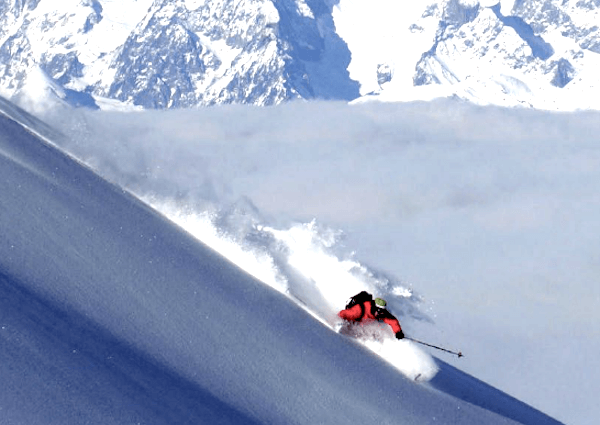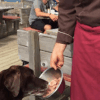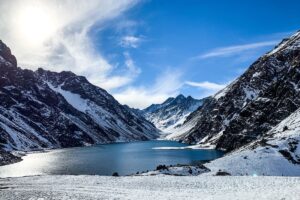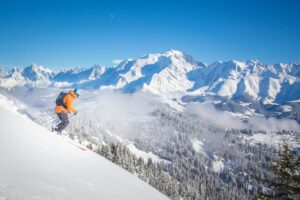
There are only 35km of pistes here – but because they’re so quiet they’re worth 70km, of pistes elsewhere. After blasting around them for a couple of days your confidence is going to be so boosted you may be ready to ski something more challenging. An easy bump run perhaps? Or maybe a touch of powder? That’s the real strength of small, uncrowded resorts like this – ultimately, you’re going to have to concentrate on your technique because there isn’t hundreds of miles of mountain to distract you. And if you do that, you’re going to become a better skier.
Outside the school holidays, this is a great place to learn
The beginner’s area is small – and it gets a bit congested these days, during the school holidays. But at the quieter times of the season, the unhurried, uncrowded, and unthreatening atmosphere – not to mention the empty pistes – provides the perfect environment in which to make your first turns. Plus there’s an easy green run from the first chair to progress to, and then some gentle blues higher up. Chances are, you’ll be skiing the latter with a fair degree of confidence by the end of your first week.
Intermediates will need to commute – or take a few lessons
For intermediates, the appeal of this place lies in its empty pistes. They’re actually pretty sweet too, the reds especially – long, fast, swooping tracks on which you can really build your speed. Ski them for a couple of days and your confidence will sky-rocket.
After that, you’ve got two options. The first is to commute to some of Sainte Foy’s near-neighbours – both Les Arcs and the Espace Killy (the area shared by Tignes and Val d’Isere) are heaven for intermediates, and you’d be mad not to ski both for a day (though you might find the crowds a bit of shock). But here’s a thought. Don’t spend your whole trip clocking up the mileage. Spend some money on tuition in Sainte Foy, and use all those empty slopes to work on your technique instead. Who knows: by the end of the week you could be making punching your way through powder.
Advanced skiers will relish the off-piste
There are all kinds of options for advanced and expert skier. You can go off the main ridge line frontside – back down towards the resort – or backside, into the sun, towards Val d’Isere. There are chutes, jumps, couloirs, and trees, plus wide-open bowls on offer too, and they’re all right there in front of you, on a plate. You can see it all from the chairlifts. More is to be found if you hike the ridge, skier’s right, from the top of the lift system, and then drop into the north west-facing bowl above the village.
In fact, the frontside terrain reminds us of the kind of freeriding you’ll find in North America – it’s not hidden away from view as many of the big Alpine descents are. There is one important difference, however: away from the groomed pistes, most of the slopes are not avalanche-protected, as they are in North America. And they’re very prone to slides – so much so that the resort has trouble keeping the pistes open after a heavy dump. So hire a guide if you’re not properly equipped and super-experienced.
Interestingly, the resort has now introduced three small off-piste areas which are avalanche-protected. We hope this is the start of something big – the resort has a great future if it starts to secure large areas of off-piste as the Americans and Canadians do. For the moment however, it’s a limited experiment and of more interest to advanced/intermediate skiers, rather than experts.
Snowboarders should pray for snow
If it snows, snowboarders will love the place. If it doesn’t, they’ll probably end up commuting to nearby Val d’Isere, Tignes or Les Arcs, in search of a decent terrain park and longer pistes – unless, that is, they’re still mastering their linked turns. This is one of those resorts that’s best visited after a dump. So keep an eye on our snow forecast and snow reports, and book at the last minute, when you know conditions will be good.



















Add Comment